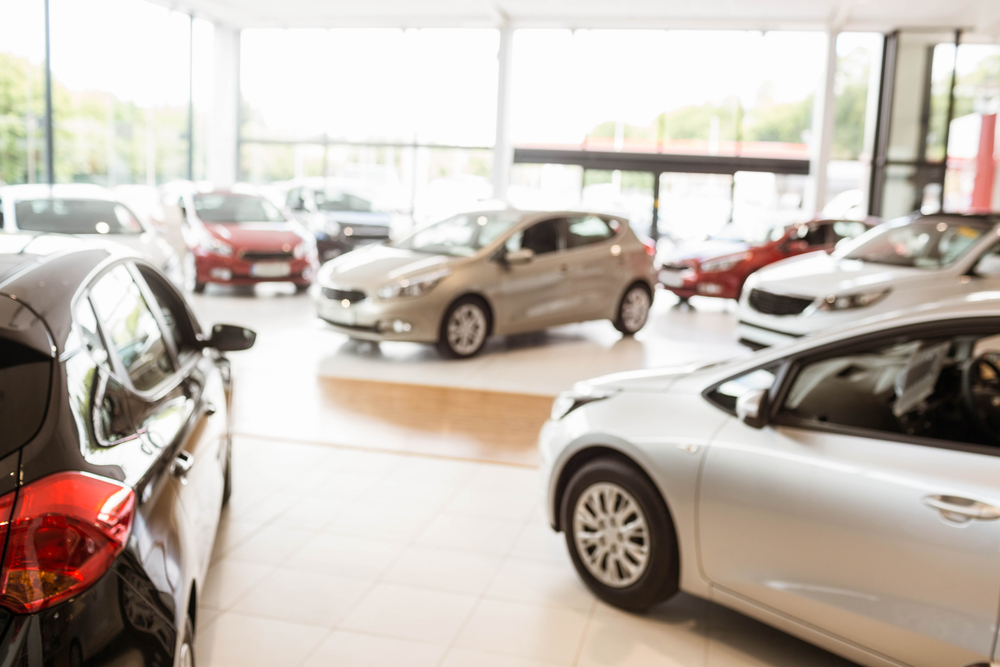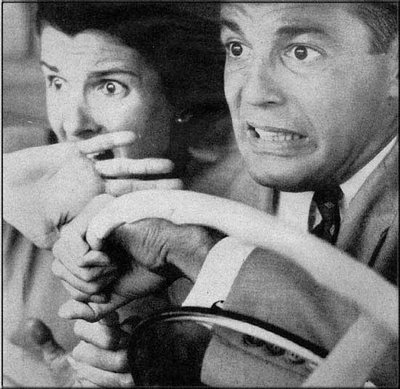Put Driver Safety & Comfort First to Get from A-B in One Piece

A road trip in a car that’s uncomfortable will leave even grown-ups wondering, “are we there yet?” Picture a family stuffed in a Toyota Yaris. A football player-sized dad is squished in the driver seat, an irritated mom holds onto a loose suitcase because of a full trunk, and the kids keep kicking their parents’ seats in an effort to stretch.
Sounds dreadful, even a bit unsafe, doesn’t it?
The problem is not the Yaris. Neither is it dad’s build, mom’s mood, or the kids’ kicks.
If you’re looking to buy a car, don’t just think of its price, performance or how pretty it looks. Think also about how safe and cozy it is. You’ll save yourself from unnecessary pain, physical and emotional, by making safety and comfort a priority.
Driver Safety is a Top Priority
Safety should sit near the top of your car buying checklist. It should be number one if you’ve got kids in the single-digit ages or if you have a kid on the way since smaller, growing bodies sustain worse injuries in car accidents. You should even make safety a priority if you have “grown” children who want to buy their first car. Why?
Young drivers ages 16-24 have the highest death rates from car accidents. Of the 2,172 road deaths in Canada back in 2013, 439 deaths (20%) occurred among young people in this age bracket.
So it’s really, really important to buy a car that has earned plenty of kudos in the safety department. But what should you look for?
High crash rating & safety awards
Over the years, you’ve most likely seen a ton of ads where a car full of crash test dummies gets shot into a wall. Usually near the end of the commercial, there’s mention of a five-star safety rating or an award for safety or sometimes both. It certainly doesn’t hurt to buy such a car.
These vehicles win awards because they usually have the “best-of-the-best” features designed to withstand collisions. One such aspect of these vehicles are their “crumple zones” (a.k.a, “crush zones”), which are the front and rear structures of a car. A crumple zone serves two purposes: 1) Reduce the initial force of the crash, 2) Redirect the force before it reaches the car’s occupants.
Since new cars feature stronger crumple zones than older ones, it’s better to shop for newer vehicles ideally from the current decade.Driver Safety & Car Type
A few years ago someone tweeted about a Smart Car getting destroyed by bird poop because of its small size, which led to a hilarious response from BMW. The tweet was obviously a joke, just as BMW’s reply was, but it brings us to our next point: car type affects driver safety. This isn’t so much about the brand, although sometimes it is, but more about the category the car falls under. Here’s a look at what we’re talking about: There are dozens of car types:- Microcars
- Minicars
- Hatchbacks
- Small cars
- Midsize and Large cars
- Crossovers
- SUVs (large & midsize)
- Pickups
- and many more...
- SUVs (large & midsize)
- Pickups
- Midsize and Large cars
- Microcars
- Minicars
- Small cars
Safety Technology
Finally, there’s safety technology. Each year that goes by brings along new safety features, features that once seemed possible only in movies and T.V shows. These devices can’t and shouldn’t replace your senses, but they can work as your “sidekick”. They really come in handy if you have to drive on unfamiliar roads, in bad weather or for when you feel more tired than usual. To get you started, look at this quick dictionary of modern safety features and keep them in mind for your next purchase. 360-Degree Camera - Gives you the full picture of your surroundings so that you can back up, parallel park, and make turns without guessing or crossing your fingers not to hit something or someone.
Active Park Assist - Not a good parker? Park-assist technology lets your car park for you.
Adaptive Cruise Control - It’s cruise control on steroids - it automatically speeds up or slows down to keep you at a steady and safe pace with the car in front of you.
Adaptive headlights - These headlights are designed with the purpose of making low-light conditions around curves and hills more visible.
Blindspot Warning - This warning system will alert you when a car enters your blind spot as insurance so as not to get into an accident and end up dealing with insurance. (You should always double check your blind spot anyway)
Brake Assist - A system that hits the brakes so you come to a stop faster than you could on your own in an emergency situation.
Collision Warning System - By means of a radar, laser or camera, this system warns you of a collision that is about to take place with another vehicle.
Drowsiness Warning System - When driver fatigue sets in, a drowsiness warning system will sense your tiredness and will alert you to keep you awake.
Electronic Stability Control - A safety feature that detects and reduces a loss of traction (skidding), which helps you stay in control on wet and slippery roads.
Lane Departure Warning - If for some reason you drift, you’ll get a nice beep or buzz to remind you to remain in your lane.
Night Vision - Night vision displays can help you see more in the dark than what your headlamps can shine on their own.
Here at Auto Loan Solutions, some of our customers ask directly about safety features. Based on their specific needs, we’ll point them to some of the features mentioned above, and will do the same for you.
360-Degree Camera - Gives you the full picture of your surroundings so that you can back up, parallel park, and make turns without guessing or crossing your fingers not to hit something or someone.
Active Park Assist - Not a good parker? Park-assist technology lets your car park for you.
Adaptive Cruise Control - It’s cruise control on steroids - it automatically speeds up or slows down to keep you at a steady and safe pace with the car in front of you.
Adaptive headlights - These headlights are designed with the purpose of making low-light conditions around curves and hills more visible.
Blindspot Warning - This warning system will alert you when a car enters your blind spot as insurance so as not to get into an accident and end up dealing with insurance. (You should always double check your blind spot anyway)
Brake Assist - A system that hits the brakes so you come to a stop faster than you could on your own in an emergency situation.
Collision Warning System - By means of a radar, laser or camera, this system warns you of a collision that is about to take place with another vehicle.
Drowsiness Warning System - When driver fatigue sets in, a drowsiness warning system will sense your tiredness and will alert you to keep you awake.
Electronic Stability Control - A safety feature that detects and reduces a loss of traction (skidding), which helps you stay in control on wet and slippery roads.
Lane Departure Warning - If for some reason you drift, you’ll get a nice beep or buzz to remind you to remain in your lane.
Night Vision - Night vision displays can help you see more in the dark than what your headlamps can shine on their own.
Here at Auto Loan Solutions, some of our customers ask directly about safety features. Based on their specific needs, we’ll point them to some of the features mentioned above, and will do the same for you.
Don’t Forget About Driver Comfort
The other side of the safety coin is comfort. A lack of comfort reduces driver safety, and can turn a routine drive into what seems like a nagging test of your endurance and patience. So it’s critical that you get a car that suits your physical makeup.Buy a car that suits your body type
 You might say to yourself, “Whoa, I’m not getting a tailor-made suit or a wedding dress here, it’s just a car!” But if your vehicle doesn’t compliment your body type, every trip will feel uncomfortable, forcing you to stretch about and shift around to avoid discomfort or to stay awake.
And body type and car choice affects safety as well. For example, researchers have found that people shorter than 5’4” are more likely to sustain serious injuries from a deployed airbag, because their smaller size forces them to sit closer. Taller people, are quite likely to suffer severe chest injuries because of having higher torsos which are level with the steering wheel.
This example of airbags alone illustrates how your body type can greatly affect your safety while driving.
You might say to yourself, “Whoa, I’m not getting a tailor-made suit or a wedding dress here, it’s just a car!” But if your vehicle doesn’t compliment your body type, every trip will feel uncomfortable, forcing you to stretch about and shift around to avoid discomfort or to stay awake.
And body type and car choice affects safety as well. For example, researchers have found that people shorter than 5’4” are more likely to sustain serious injuries from a deployed airbag, because their smaller size forces them to sit closer. Taller people, are quite likely to suffer severe chest injuries because of having higher torsos which are level with the steering wheel.
This example of airbags alone illustrates how your body type can greatly affect your safety while driving.
 The two basic bodily factors to think of are your height and weight (body shape). You don’t need to scramble for a measuring tape or a weighing scale, but surely, you know whether you’re tall or short, petite or wide, lean or big and so forth. So go ahead and (honestly) label yourself now.
With your body size in mind, apply the following tips when browsing for a new car.
If you’re a bigger person, consider...
The two basic bodily factors to think of are your height and weight (body shape). You don’t need to scramble for a measuring tape or a weighing scale, but surely, you know whether you’re tall or short, petite or wide, lean or big and so forth. So go ahead and (honestly) label yourself now.
With your body size in mind, apply the following tips when browsing for a new car.
If you’re a bigger person, consider...
- Adjustable car seats that allow you to shift back (for longer legs)
- Seating that allows full visibility of traffic and mirrors (tall people)
- A higher roof (self-explanatory)
- Wider seating (for broader hips and shoulders)
- Adequate space between steering wheel (in case of a deployed airbag)
- Adjustable seats that bring you closer to pedals/clutch (for shorter legs)
- Higher seats that allow you to see side and rearview mirrors with ease
- Narrower seat cushions (makes it easier to reach pedals)
 Existing Health Conditions
Body type isn’t the only physical factor to think of when buying a car. You also need to think of your body’s “kinks” - in other words, illnesses or injuries you may deal with.
Sure, you don’t want to think about them. But those ailments will force you to give them thought if they cause you discomfort, pain or driver fatigue. That’s why it doesn’t hurt to think of how your car choice will trigger these conditions beforehand.
Health Conditions that Driving Can Aggravate:
Illness and injury can take on any form - mental and emotional issues are not excluded here - but the ones we want to focus on are physical.
Arthritis - In all its forms, osteoarthritis, rheumatoid arthritis (RA) or Lyme disease can make driving painful and tiring.
Back pain - Caused by numerous illness and injuries, back pain can make it challenging for people to drive long distances.
Chronic Fatigue Syndrome - A controversial yet debilitating illness, Chronic Fatigue Syndrome (CFS) causes extreme tiredness, muscle and joint aches, and cognitive problems.
Fibromyalgia - Another controversial illness known to cause brain fog, tiredness and muscle pains, Fibromyalgia can impact one's ability to drive comfortably.
Sciatica - Sciatica is a form of pain that extends from the lower back down through the legs (follows the pathway of the sciatic nerve).
Scoliosis - A sideways curvature of the spine which can result in deformity and pain, can make long drives uncomfortable.
Vision problems - Problems with seeing clearly (visual acuity) or making sense of what one sees (visual processing) can lead to pain, driver fatigue and difficulty concentrating.
Existing Health Conditions
Body type isn’t the only physical factor to think of when buying a car. You also need to think of your body’s “kinks” - in other words, illnesses or injuries you may deal with.
Sure, you don’t want to think about them. But those ailments will force you to give them thought if they cause you discomfort, pain or driver fatigue. That’s why it doesn’t hurt to think of how your car choice will trigger these conditions beforehand.
Health Conditions that Driving Can Aggravate:
Illness and injury can take on any form - mental and emotional issues are not excluded here - but the ones we want to focus on are physical.
Arthritis - In all its forms, osteoarthritis, rheumatoid arthritis (RA) or Lyme disease can make driving painful and tiring.
Back pain - Caused by numerous illness and injuries, back pain can make it challenging for people to drive long distances.
Chronic Fatigue Syndrome - A controversial yet debilitating illness, Chronic Fatigue Syndrome (CFS) causes extreme tiredness, muscle and joint aches, and cognitive problems.
Fibromyalgia - Another controversial illness known to cause brain fog, tiredness and muscle pains, Fibromyalgia can impact one's ability to drive comfortably.
Sciatica - Sciatica is a form of pain that extends from the lower back down through the legs (follows the pathway of the sciatic nerve).
Scoliosis - A sideways curvature of the spine which can result in deformity and pain, can make long drives uncomfortable.
Vision problems - Problems with seeing clearly (visual acuity) or making sense of what one sees (visual processing) can lead to pain, driver fatigue and difficulty concentrating.
 Some have found higher set vehicles, namely, SUVs, vans and trucks to work well for back pain because they don’t have to strain to get in and out of them. But the opposite can be true for those have joint issues such as painful knees - having to step up into a higher-set vehicle can hurt.
Some conditions will force you to test drive the vehicle, or at least make note of how it feels to enter and exit the car. Your level of comfort (or discomfort) won’t feel like someone else’s, so the best way to gauge if a car will suit you or not, is to interact with it.
If that doesn’t seem to help, you can look for some products that support good posture and reduce pain. For example, you can install ergonomic backrests for your seat to give you extra back support if needed. Or you can go all out, assuming you’ve got extra cash, to replace an existing driver’s seat with an ergonomic one.
Even a simple, department store fix such as a towel can help with back pain, if it’s rolled up and placed between your back and the seat while driving. The towel maintains the arch in your back, allowing you to maintain an upright posture.
Some have found higher set vehicles, namely, SUVs, vans and trucks to work well for back pain because they don’t have to strain to get in and out of them. But the opposite can be true for those have joint issues such as painful knees - having to step up into a higher-set vehicle can hurt.
Some conditions will force you to test drive the vehicle, or at least make note of how it feels to enter and exit the car. Your level of comfort (or discomfort) won’t feel like someone else’s, so the best way to gauge if a car will suit you or not, is to interact with it.
If that doesn’t seem to help, you can look for some products that support good posture and reduce pain. For example, you can install ergonomic backrests for your seat to give you extra back support if needed. Or you can go all out, assuming you’ve got extra cash, to replace an existing driver’s seat with an ergonomic one.
Even a simple, department store fix such as a towel can help with back pain, if it’s rolled up and placed between your back and the seat while driving. The towel maintains the arch in your back, allowing you to maintain an upright posture.
 For a person with vision issues, the best fix is to wear prescription glasses or follow an optometrist's advice on eye health. For mental conditions such as ADHD, dyslexia and mood disorders, which can also affect one’s ability to drive comfortably, it’s best to use treatments and coping strategies given to you by a professional. However, many of the safety devices mentioned above can provide assistance as well for some vision or attention issues.
No matter what you wrestle with, speaking to a pro, whether they are a physiotherapist or just your family doctor, is a sure way to find advice on how to drive with less or no pain.
Suited for the Right Purpose
Whether you’re bigger or smaller, pain-free or not, you should buy a vehicle that has the right “fixings”. We’re not talking about decor here - sparkly woodgrain, crisp leather, neon lights - none of that makes a difference in terms of your safety and comfort.
What we mean is the right amount of space inside the car and the shape of your seating. The scenario mentioned at the beginning of this post was an exaggeration, but if you smiled, you could probably relate to it in some way. Maybe you were once that person hunched over in the driver’s seat or the one with the bag on your lap because there was no extra space for luggage. You can prevent that from happening again by choosing a car with the right interior specs.
Number of family members
The simplest way to guarantee that your car has enough space, is to choose a vehicle that will fit the whole family. Please, if you’ve got a family of six, don’t put your money on a two-seater, unless the remaining four family members are comfortable being strapped on the roof or in the trunk. This one is more of a common-sense principle.
Interests & hobbies
Now here’s another thing drivers mess up when choosing a car: they don’t buy a vehicle that suits their interests. Think of what your interests and hobbies are. If you’re an athlete or have athletic family members, then you’d want to get a car that can hold all the necessary sports gear. The same goes for construction or tradespeople.
In both cases, a bigger vehicle such as a truck or minivan would work best. It’s neither fun nor safe having a bag with a protruding hockey stick or a construction saw sharing seat space with you. Ideally, you wouldn’t want to get a car that’s too compact for these purposes.
The exterior matters as well. Certain activities require a sturdier car, so think too of how a vehicle’s “build” will affect your comfort depending on the roads you travel.
Car construction, which is a big deal for many, is an exterior factor that plays a part in comfort and safety for driving-related hobbies. For example, if you enjoy long road trips or any type of driving in rough terrain, you wouldn’t want to take your luxury sedan with you.
For a person with vision issues, the best fix is to wear prescription glasses or follow an optometrist's advice on eye health. For mental conditions such as ADHD, dyslexia and mood disorders, which can also affect one’s ability to drive comfortably, it’s best to use treatments and coping strategies given to you by a professional. However, many of the safety devices mentioned above can provide assistance as well for some vision or attention issues.
No matter what you wrestle with, speaking to a pro, whether they are a physiotherapist or just your family doctor, is a sure way to find advice on how to drive with less or no pain.
Suited for the Right Purpose
Whether you’re bigger or smaller, pain-free or not, you should buy a vehicle that has the right “fixings”. We’re not talking about decor here - sparkly woodgrain, crisp leather, neon lights - none of that makes a difference in terms of your safety and comfort.
What we mean is the right amount of space inside the car and the shape of your seating. The scenario mentioned at the beginning of this post was an exaggeration, but if you smiled, you could probably relate to it in some way. Maybe you were once that person hunched over in the driver’s seat or the one with the bag on your lap because there was no extra space for luggage. You can prevent that from happening again by choosing a car with the right interior specs.
Number of family members
The simplest way to guarantee that your car has enough space, is to choose a vehicle that will fit the whole family. Please, if you’ve got a family of six, don’t put your money on a two-seater, unless the remaining four family members are comfortable being strapped on the roof or in the trunk. This one is more of a common-sense principle.
Interests & hobbies
Now here’s another thing drivers mess up when choosing a car: they don’t buy a vehicle that suits their interests. Think of what your interests and hobbies are. If you’re an athlete or have athletic family members, then you’d want to get a car that can hold all the necessary sports gear. The same goes for construction or tradespeople.
In both cases, a bigger vehicle such as a truck or minivan would work best. It’s neither fun nor safe having a bag with a protruding hockey stick or a construction saw sharing seat space with you. Ideally, you wouldn’t want to get a car that’s too compact for these purposes.
The exterior matters as well. Certain activities require a sturdier car, so think too of how a vehicle’s “build” will affect your comfort depending on the roads you travel.
Car construction, which is a big deal for many, is an exterior factor that plays a part in comfort and safety for driving-related hobbies. For example, if you enjoy long road trips or any type of driving in rough terrain, you wouldn’t want to take your luxury sedan with you.
 You’d probably then want to get a sporty compact car or a truck built for dirt trails and rocky roads. Not only would such a vehicle perform better in these environments, it would offer more safety and comfort because it’s built to weather tough conditions. So think too of all the activities you like to do and how your car will support them.
When it comes to driving with certain activities in mind, we often recommend cars that not only will suit your budget, but also, cars that will give you the best experience for your interests.
Highway of happiness
That poor family in the Yaris learned things the hard way. Had they considered the elements of safe and comfortable driving, they would have quickly canned that car as an option. Instead, they might have bought an SUV.
Some people get so caught up looking for a budget-friendly car or a high performance one, that they forget to look at vehicles they’ll feel comfortable in. Others concern themselves so much with the outside design of a car, that they forget about the inside.
The lesson for you is to think about how car your choice affects driver safety, comfort and well-being on the road. Don’t buy a car just for looks. Don’t buy a car just for price or performance. How it feels to drive in a car is just as important. After all, you’ll spend way more time inside your ride than you will outside just looking at it.
Stay tuned for our upcoming post on how to buy a car with your “location” in mind.
You’d probably then want to get a sporty compact car or a truck built for dirt trails and rocky roads. Not only would such a vehicle perform better in these environments, it would offer more safety and comfort because it’s built to weather tough conditions. So think too of all the activities you like to do and how your car will support them.
When it comes to driving with certain activities in mind, we often recommend cars that not only will suit your budget, but also, cars that will give you the best experience for your interests.
Highway of happiness
That poor family in the Yaris learned things the hard way. Had they considered the elements of safe and comfortable driving, they would have quickly canned that car as an option. Instead, they might have bought an SUV.
Some people get so caught up looking for a budget-friendly car or a high performance one, that they forget to look at vehicles they’ll feel comfortable in. Others concern themselves so much with the outside design of a car, that they forget about the inside.
The lesson for you is to think about how car your choice affects driver safety, comfort and well-being on the road. Don’t buy a car just for looks. Don’t buy a car just for price or performance. How it feels to drive in a car is just as important. After all, you’ll spend way more time inside your ride than you will outside just looking at it.
Stay tuned for our upcoming post on how to buy a car with your “location” in mind. 





